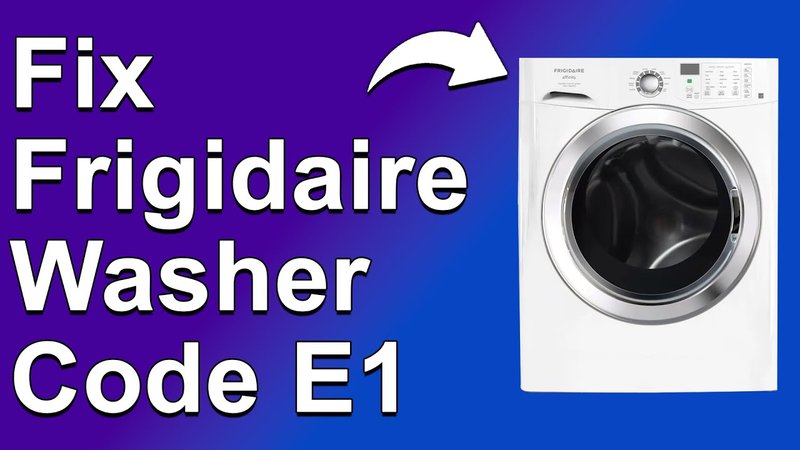
You might be tempted to brush it off, thinking, “It’s just a number on the display, right?” But here’s the deal: the E1 error code is your unit’s way of indicating that something needs checking. Much like your car’s check engine light, it’s a heads-up that some maintenance is due. Not addressing it could be likened to ignoring a slow leak in a tire—it might hold up for a while, but eventually, it’ll cause real trouble. So, let’s dive a bit deeper and see why it’s important to pay attention to this little signal and what it might mean for your beloved cooling companion.
Understanding the E1 Error Code
First off, let’s decode what the E1 error is trying to tell you. In many Frigidaire air conditioners, this particular error code is associated with a problem in communication, often pointing to an issue with the unit’s temperature sensor. Think of the sensor as the air conditioner’s thermometer—it’s crucial for maintaining the perfect climate in your room. If it’s malfunctioning, the air conditioner can’t accurately gauge how much to cool, which can lead to inefficiencies and uneven air temperature.
Now, you might be wondering, “Is it just a glitch, or is it something bigger?” While sometimes electronics can have minor hiccups that resolve on their own (like rebooting your computer), it’s generally not wise to ignore persistent alerts like the E1 error. If the code remains after a reset, it’s a sign that the sensor might be faulty or there could be a connectivity issue that needs addressing.
Ignoring the E1 code might save you time in the short run, but it can lead to more significant issues down the road. Take it like this: putting off dealing with a small hole in your roof might seem negligible until one day, a heavy rainstorm causes a flood in your attic. Similarly, addressing the E1 error promptly can prevent larger, more costly repairs in the future.
Steps to Address the E1 Error Code
So, what can you do about it? Here’s a straightforward approach to tackling the E1 error code. Start by turning off your air conditioner and unplugging it for a few minutes. This is akin to giving your device a moment of rest and a chance for a fresh start. Once you plug it back in and restart, check if the error persists.
If the E1 code pops up again, it’s time to roll up your sleeves. Begin by inspecting the sensor wiring. Over time, vibrations or movement might have dislodged a wire or created a loose connection. Carefully reconnect any loose wires you find. If this doesn’t fix the issue, then the sensor itself might be faulty or require cleaning. Dust and grime can impact its effectiveness, much like how dirty glasses obstruct your view.
In case you’re not comfortable handling this on your own, or if these steps don’t resolve the issue, it might be wise to call in a professional. Having an expert take a look ensures that the problem is correctly identified and fixed, safeguarding your air conditioner’s performance and your peace of mind.
Preventing Future E1 Error Codes
Once your air conditioner is back to working smoothly, you’ll want to make sure it stays that way. Regular maintenance is key. Just as you wouldn’t skip oil changes for your car, don’t forget to give your air conditioner some TLC every now and then. Regularly cleaning or replacing filters, ensuring the unit is dust-free, and checking for loose connections can go a long way in preventing error codes.
A little proactive care can help you avoid disruptions and keep your unit running efficiently. Consider setting a reminder to perform these simple maintenance tasks every few months. Not only will this keep error codes at bay, but it will also extend the lifespan of your air conditioner, ensuring those cool breezes continue flowing smoothly through your home.
In the end, while it might be tempting to ignore the E1 error code, giving it the attention it needs can save you from headaches in the future. Treat it as an opportunity to ensure your air conditioner is in top shape, ready to keep you cool and comfortable all summer long.